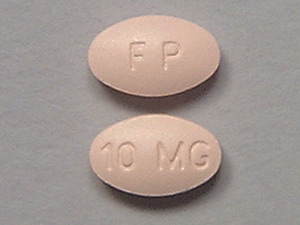March 28, 2012 — The selective serotonin reuptake inhibitor (SSRI) citalopram (Celexa, Forest Laboratories) should not be used at doses greater than 20 mg per day in adults older than 60 years because of a potential risk for QT prolongation, the FDA warns.
Citalopram use at any dose is discouraged in patients with certain conditions because of the risk of QT prolongation, but because it may be important for some of those patients to use citalopram, the drug label has been changed to describe the particular caution that needs to be taken when citalopram is used in such patients.
The revised drug label also describes lower doses that should be used in patients older than 60 years.
Specifically the FDA states:
Citalopram is not recommended for use at doses greater than 40 mg per day because such doses cause too large an effect on the QT interval and confer no additional benefit.
Citalopram is not recommended for use in patients with congenital long QT syndrome, bradycardia, hypokalemia, or hypomagnesemia, recent acute myocardial infarction, or uncompensated heart failure.
Citalopram use is also not recommended in patients who are taking other drugs that prolong the QT interval.
The maximum recommended dose of citalopram is 20 mg per day for patients with hepatic impairment, patients who are older than 60 years, patients who are CYP2C19 poor metabolizers, or patients who are taking concomitant cimetidine (Tagamet, GlaxoSmithKline) or another CYP2C19 inhibitor, because these factors lead to increased blood levels of citalopram, increasing the risk for QT interval prolongation and torsade de pointes.
More information on today's warning is available on the FDA Web site.
Adverse events related to citalopram should be communicated to MedWatch by telephone at 1-800-FDA-1088, by fax at 1-800-FDA-0178, online at the Medwatch Web site, or by mail to 5600 Fishers Lane, Rockville, Maryland 20852-9787.
Citalopram use at any dose is discouraged in patients with certain conditions because of the risk of QT prolongation, but because it may be important for some of those patients to use citalopram, the drug label has been changed to describe the particular caution that needs to be taken when citalopram is used in such patients.
The revised drug label also describes lower doses that should be used in patients older than 60 years.
 |
Citalopram (Celexa).
|
Citalopram is not recommended for use at doses greater than 40 mg per day because such doses cause too large an effect on the QT interval and confer no additional benefit.
Citalopram is not recommended for use in patients with congenital long QT syndrome, bradycardia, hypokalemia, or hypomagnesemia, recent acute myocardial infarction, or uncompensated heart failure.
Citalopram use is also not recommended in patients who are taking other drugs that prolong the QT interval.
The maximum recommended dose of citalopram is 20 mg per day for patients with hepatic impairment, patients who are older than 60 years, patients who are CYP2C19 poor metabolizers, or patients who are taking concomitant cimetidine (Tagamet, GlaxoSmithKline) or another CYP2C19 inhibitor, because these factors lead to increased blood levels of citalopram, increasing the risk for QT interval prolongation and torsade de pointes.
More information on today's warning is available on the FDA Web site.
Adverse events related to citalopram should be communicated to MedWatch by telephone at 1-800-FDA-1088, by fax at 1-800-FDA-0178, online at the Medwatch Web site, or by mail to 5600 Fishers Lane, Rockville, Maryland 20852-9787.
Comments
Post a Comment